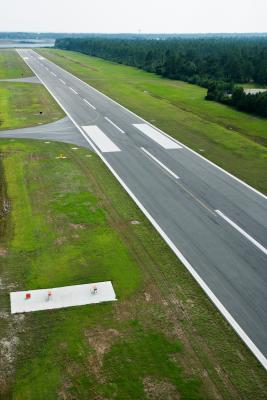
Along with tires and suspension, and probably more so than the engine or drivetrain, differentials define the character of a car. While most drivers put very little thought into the type of differential they use, it's the alpha and omega to those who put traction above all else. Full lockers are one very extreme example of this quest for ultimate power delivery -- perhaps a bit too extreme for most applications.
A differential is a device that allows the left and right drive wheels to turn at different speeds as you go around a corner. A standard or "open" diff does this by taking power from the engine and spinning a hollow, cylindrical case. Inside that case are a set of pinion gears that ride on shafts poking inward. Into the ends of the cylinder poke the axle shafts, and on the tips of the axle shafts are gears that engage the pinions. As long as both axle shafts are spinning at the same speed, the pinion gears remain still and route power equally. But if one axle spins faster than the others, the pinions spin around the slower-moving one and route all of the power to the faster-moving wheel.
The standard clutch-type limited slip -- "Posi"or "Trac Loc," if you're a pensioner -- uses a set of clutches to lock the axle shafts to the carrier gear. When the pinion gears try to rotate to accommodate differing wheel speeds, a cross-shaft connected to the pinions rotates a pressure plate behind the axle gears. This pressure plate has a wavy "face" that corresponds to wavy detents on the back of the gear; as the plate rotates, the wave tops push it away from the axle gear and toward the case. Between the pressure plate and case lay a clutch pack. The harder the pressure plate pushes back, the harder the clutches engage. This arrangement effectively locks the axles to the carrier, allowing as much as 50 percent of engine torque to go to the slower-moving wheel.
Some lockers are essentially just powerful variations on the clutch-type LSD, of which there are many. The one mentioned above is a design favored by Eaton, but others may use a simple pinion cross-shaft to push on the clutch pack. A "full-locker" does just what it says: It completely locks the axles together without any provisions for slippage. Full lockers such as the Detroit Locker use no friction discs at all. Rather, they use a center disc called the spider assembly in place of the pinion; the spider disc has gear teeth on either side that engage matching teeth on sliding "nose pieces," which attach to the axles. A set of springs keeps the nose pieces locked to the spider until one wheel starts to spin faster than the other. At that point, the faster-spinning nose piece ramps up and away from the spider and disengages completely until wheel speeds match again.
A true "full-locker" -- be it automatic or driver-engaged -- almost always uses some variation on the spider-and-nose-piece design. True lockers completely lock the axles together when they're active, which is great for power delivery. But the downside with a locker of any type is that it works like a light switch -- it's either on or it's off. This can be a real problem for road-going applications, where smooth and progressive is the name of the game for keeping a car at its cornering limits. Lockers work very well when both wheels are turning the same speed, but only when they're turning the same speed. The rest of the time they act like an open differential. And you can't leave the axle locked on the road, because then your car wouldn't want to turn.
While they may be very light, sturdy and dirt-simple, lockers just don't tend to fare well anywhere outside of a drag strip or low-speed off-road trail. They do work fantastically in these applications, though, allowing a driver to get hard-core traction when it's needed and then to drive the vehicle home afterward. But road racing, rallying and anything else that requires the car to turn at high speed requires far more progressiveness and subtlety than the locker can provide. Smooth and transparent application is the name of the game for anything that has to power through or out of a turn. So: Full-lockers for the rock trail or the drag strip, and clutch- or some other-type LSD everywhere else.